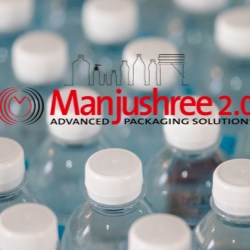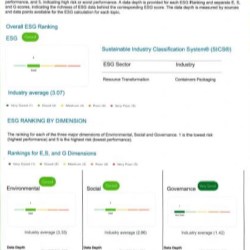

Manjushree is actively driving innovation to develop sustainable packaging solutions, contributing to a greener and more sustainable environment. One significant area of effective innovation is in the light weighting of packaging.
How do you define sustainable packaging?
At Munjushree, we see sustainable packaging as designing a pack for increased use of life cycle inventory (LCI) and life cycle assessment (LCA) whereby the packaging has a reduced environmental impact and ecological footprint. Sustainable packaging requires a look at the whole of the supply chain: from basic function, to marketing & value communication, and then through to end of life (LCA) and rebirth in order to be truly effective.
How effective is light weighting in making packaging sustainable?
Light weighting is a sustainable practice that aims to maintain the life cycle of inventory while reducing its carbon footprint by limiting the usage of plastic in the manufacture. It is a process by which the existing packaging is adjusted and redesigned in order to reduce the overall weight of the item. Light weighting both reduces the overall weight —which in turn reduces the product's carbon footprint during transportation—, and reduces the amount of plastic resin required to manufacture the product, thus saving on material.
Light weighting is done by innovations in materials, for example replacing the packaging material with a lighter weight alternative as done by using foaming technology or cutting down the amount of packaging material by redesigning the packaging.
How is light weighting achieved?
Foaming technology is a fairly recent innovation in light weighting. The foaming process is accomplished by controlled infusion of inert gases like CO2/N2 etc into a suitable layer of polyolefins. This enables an overall reduction of the density of the plastic material and hence a lighter weight. Following the principles of light weighting, at Manjushree we achieved a weight reduction of up to 20% for one of our malt-based health drink supplement manufacturing clients.
As mentioned previously, redesigning is another technique to achieve light-weighting. At Manjushree, we have been proactively offering light weighting solutions through various design innovations to our customers over the history of our association with them. Our unique designs for light weighting have already been proven such as our pantented Super Short Neck Jars/Caps. We have also recently introduced a Neck Support Ring (NSR) which reduces the weight of a Bottle/Cap and further patents are in our pipeline that result in light weighted products with tamper-evident features. Another example is where our beverage customers have achieved a lighter weight of up to 34% in PET by reducing wall thickness or thin walling of the packaging design.
Does light weighting compromise product quality?
Light weighting of PET can be achieved by redesigning packaging material to reduce the weight but without compromising its quality. The redesigning could be simple like replacing handles with grips within the packaging design to hold a container, or something more complex. Light weighting in PET can also be achieved through the thin walling of containers to reduce material used.
Design is critical in light weighting and each material type has its own challenges. There are several factors we keep in mind while redesigning packaging. For example, in PET beverage bottles/containers, the redesigning incorporates a range of techniques - the introduction of technical ribs to maintain the top load with a lower wall thickness, the reduction of neck weight where no internal gas pressure is involved, a redesigned bottle/container shape/form, and the use of higher I.V resins wherever possible.
It is also important to consider the filling operations of the packaging. If the bottles are filled using ‘Jet Stream’ air systems which work with neck handling, then the bottles must have a special space below the lowest part of the neck to transport the bottles in the filling line. Labeling is another important element to consider in a light-weighting project. When labeled prior to filling, a thin-walled bottle is more flexible, making labeling difficult and inaccurate. It is therefore important that light-weighted bottles —especially the ones that are thin-walled— be labeled after filling.
What other sustainability projects does Manjushree have?
In addition to proactively offering light weighting solutions through various design innovations to our customers, we manufacture packaging through responsible and sustainable practices. Environmental care is prioritized through energy-efficient manufacturing processes with minimized energy consumption and lower carbon emissions as well as waste reduction initiatives. We address challenges head-on as we promote recycling, use green energy, reuse water and source responsibly. Manjushree also has its own recycling business, BornAgain, leading the way for a circular economy and driving innovation in the development of sustainable packaging solutions.
If you are interested in learning more about sustainable packaging options, contact Manjushree.













